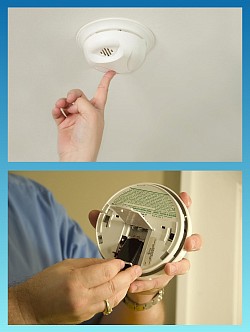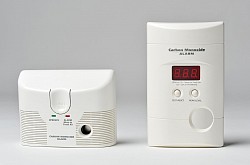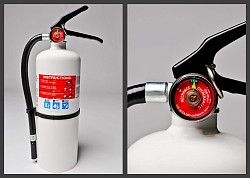CMC's Fire Safety Best Practice: Preparedness
Be Prepared for a Fire
No one plans to have a house fire, but everyone needs to be prepared for one. Just like you would prepare for a snowstorm by making sure that you have plenty of food, water and other necessities before the storm starts.
Those of us who grew up in the Northern regions of the United States have been conditioned since we were young to prepare for winter storms. We pack roadside kits with winter hazzard essentials like hand warmers, blankets, a shovel and we do all of this because we want to be prepared for the unpredictable road conditions of a snowstorm.
Yet fire; even more unpredictable and completely unbiased of your geographical location; most of us don't think about preparing for until it is too late.
Characteristics of Fire and How to Prepare
Fire is very fast, in less than 30 seconds a small flame can get completely out of control.
🧱You and your household may have as little as two minutes from the time the smoke alarm sounds to safely escape the home fire.
🧱Teach your children what your smoke alarm sounds like and what to do if they hear it.
🧱Test your smoke alarm once a month.
🧱If you wake up to a fire, you won't have time to grab valuables because fire spreads too quickly and the smoke is too thick. There is only time to escape.
Fire is very hot, the heat is more threatening than flames, the heat alone can kill someone.
🧱If you have to go through a closed door, feel the door with the back of your hand first to feel if it is hot; if it is hot, do not open the door; go through the window if you can.
🧱"Get out and stay out."
🧱"Stop Drop & Roll.
Fire creates deadly smoke, it can quickly produces thick black smoke that inhibits your ability to see. The smoke and toxic gases kill more people than flames do.
🧱Remember, "Get low and go," stay low to the ground, away from the smoke and crawl to safety.
🧱If you can't get out of a room first call 911, then cover the vents and cracks around the door with a towel (wet it if you can) to keep the smoke out.
🧱Carbon Monoxide detectors should be in a centrally located area and outside of sleeping area.
Home Fire Escape Plan Things to Remember:
Once a fire starts, it’s too late to develop your home fire escape plan. Your home should have an escape plan in place and everyone in your home needs to be prepared in advance so that they will react quickly but calmly.
Some things to remember while you are making your escape plan:
🧱Plan two ways to escape from each room (usually a door and a window.)
🧱Teach your children how to escape on their own in case you cannot help them.
🧱Make sure your children can open windows, remove screens and unlock doors.
🧱Teach children to never hide during a fire - they must get out and stay out.
🧱Practice your escape plan with everyone living in your home at least twice a year.
🧱Establish a family emergency communications plan and ensure that all household members know who to contact if they cannot find one another.
🧱You can print your own Home Fire Escape Plan grid and how to sheet here.
🧱Involve children in making and practicing your escape plan. Here is a link to a fun infographic showing the steps to making your Home Fire Escape Plan.





